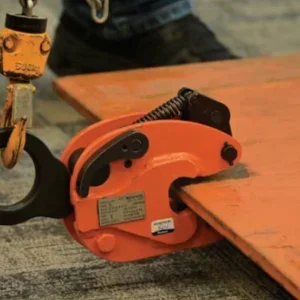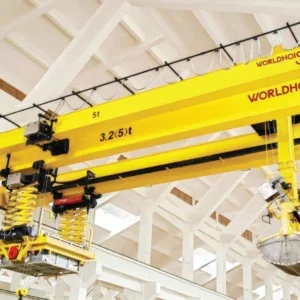
Mobile supporting structures are widely used in the industry in conjunction with hand or power-operated lifting appliances, where a temporary runway structure is required to perform both lifting and linear moving operations. They cannot on their own be used for lifting operations or classed as light cranes – it is only when fitted with a hoist, hoist and trolley or similar lifting appliance that they become effective lifting structures.
With capacities usually of up to 5t, mobile supporting structures are used where a lifting point, runway or crane cannot conveniently or economically be permanently installed. Applications can be as diverse as construction sites, maintenance work, entertainment venues as well as in warehouses and industrial facilities. Their portability gives convenience, but it also imposes restrictions on their use.
While they are not intended for movement under load, mobile supporting structures can be moved between locations so the runway can be positioned over the point of lift. The only intended movement of the raised load is along the runway. Special mobile supporting structures suitable for movement under load can be manufactured, but are uncommon due to their high cost. However, given they are visually indistinguishable from standard mobile supporting structure designs, caution should be exercised – unless the manufacturer’s confirmation of suitability for this purpose is clear, assume it is a standard design. Use must be strictly in accordance with the manufacturer’s written instructions.
Only a small number of standards cover mobile supporting structures, but those that do generally classify them as manually operated light cranes. Being essentially a movable runway structure, it should be designed, manufactured and tested in accordance with standards relevant to runways and manual light cranes as applicable.
The right design for the right job
A wide range of designs and features can be manufactured to suit specific applications, so selection needs to be carefully considered and fully discussed with the supplier. While not an exhaustive list, the following covers some of the available types.
Goalpost mobile supporting structures are intended for light-duty and are ideal for occasional maintenance work or similar applications. Their structure is less bulky than other designs, providing operatives with greater freedom of movement around the structure, which is however less robust than ‘A’ frame designs. They should not, therefore, be considered for regular or heavy-duty lifts.
Foldaway mobile supporting structures should be considered for light-duty applications requiring regular dismantling of the mobile supporting structure, either for storage or for transportation between sites.
‘A’ frame mobile supporting structures are designed for heavier-duty work and applications, where the structure will be left in its erected condition. They are ideal for applications that regularly require a mobile lifting facility, such as loading and unloading in yards and open areas, or for use in workshops. With a more robust structure than goalpost designs, they are suitable for general purpose applications.
Self-erecting mobile supporting structures can be considered for heavier-duty applications that require it to be dismantled between periods of use and where no other lifting aids are available to assist in the erection, and where sufficient space is available.
Adjustable height mobile supporting structures can be used where limited variation of the height of the runway beam is required. Designs vary and in some cases additional stays or guys are necessary to provide stability. Consideration must be given to the space occupied by such stays.
Demountable mobile supporting structures are suitable for applications where the structure will be left in its erected condition for long periods of service, but occasional dismantling for transportation or storage is required. Consideration must also be given to other lifting facilities necessary to assist in the dismantling and erection operations.
For further guidance on mobile supporting structures, consult the LEEA Code of Practice for the Safe Use of Lifting Equipment (COPSULE), which can be accessed for free at www.leeaint.com and offers best practice to prevent the risk of accidents, injuries and equipment damage during lifting operations.






